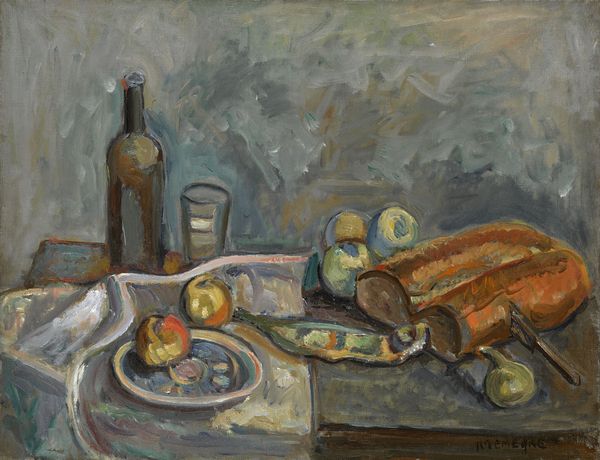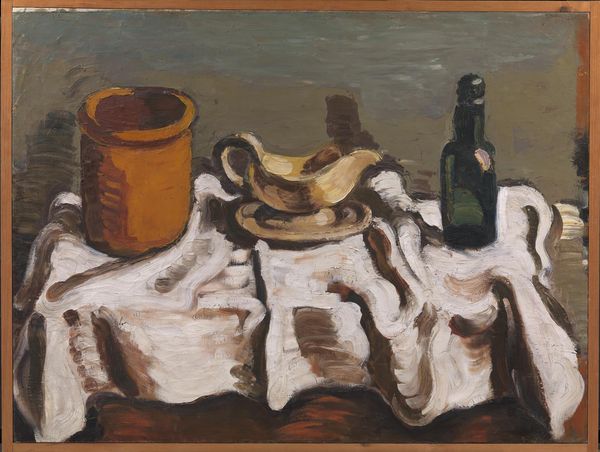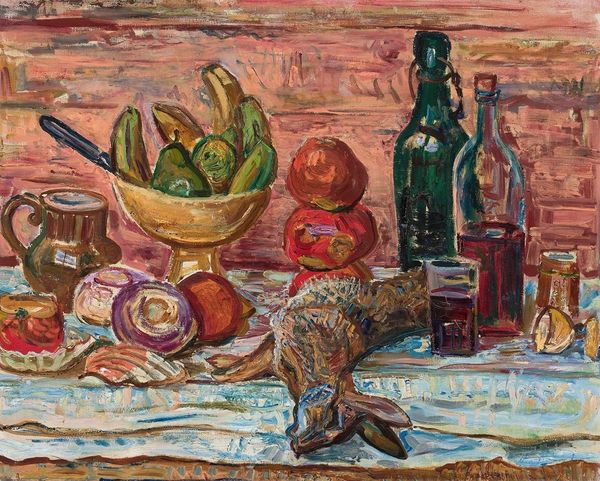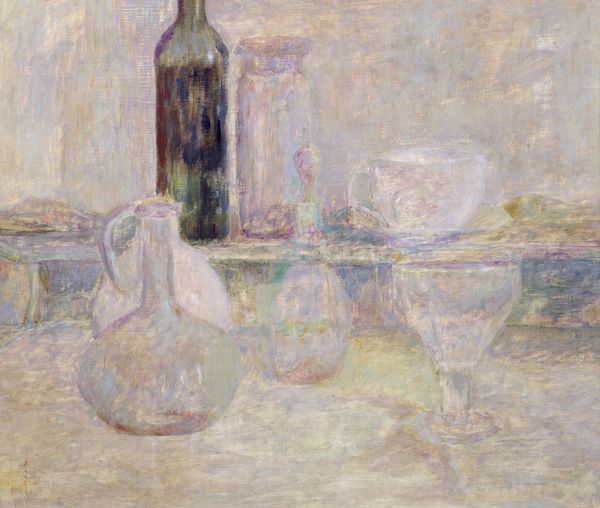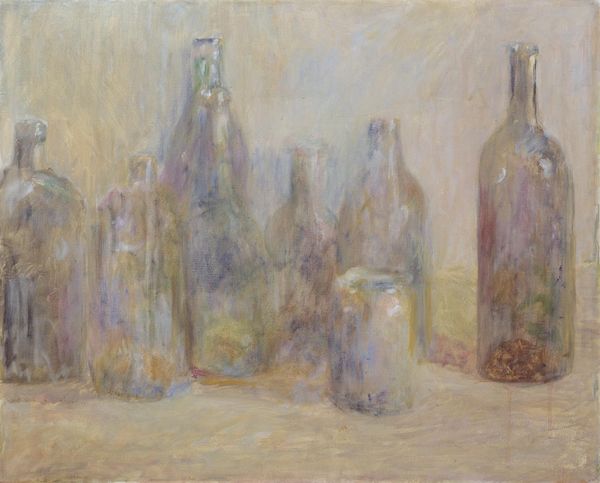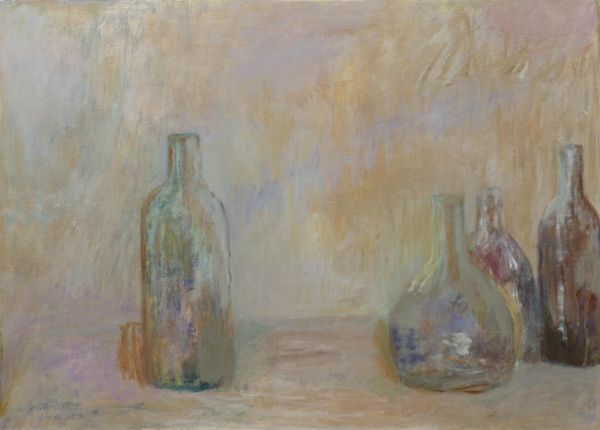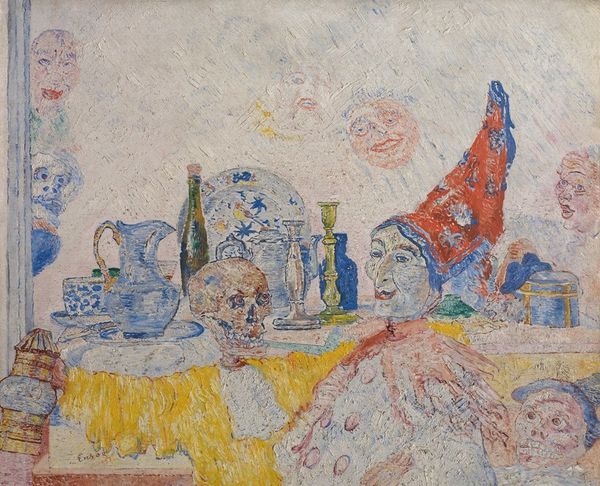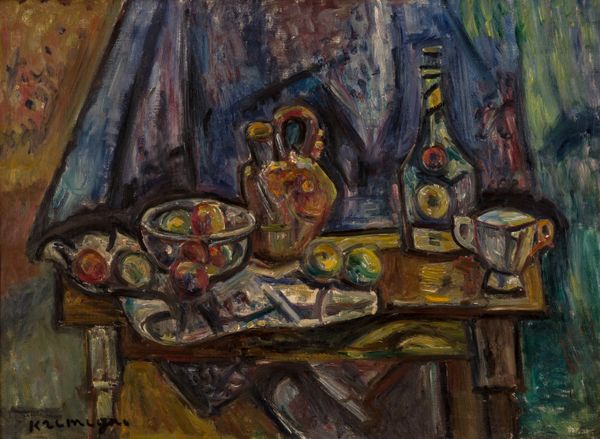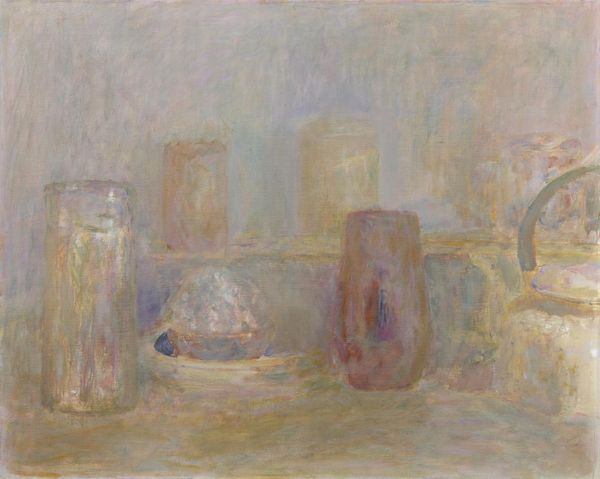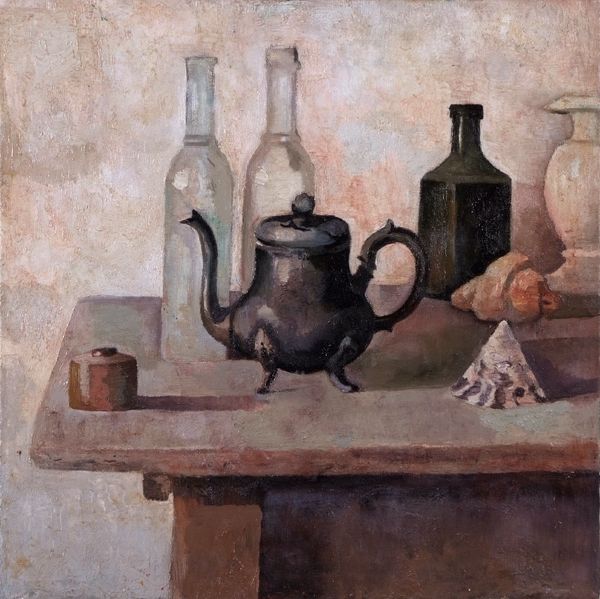
painting, oil-paint
#
portrait
#
painting
#
oil-paint
#
oil painting
#
symbolism
Copyright: Public Domain: Artvee
Curator: James Ensor painted "Mask and Crustaceans" in 1891. It’s an oil on canvas that offers a particularly striking display of his recurring themes. Editor: It’s certainly...unsettling. The combination of the pale mask and the dead crustaceans creates a really bizarre tension. The textures, especially in the rendering of the crab, are quite striking. Curator: Ensor used the motif of masks throughout his career to comment on the human condition, exposing what he saw as the grotesque nature hidden beneath social facades. Editor: And formally, look at how the composition divides the canvas: the still life of food items fighting with this encroaching theatricality from the left, emphasized by the flatness and limited color palette. Is he pushing against realism? Curator: Very possibly. He was critical of the bourgeois society of his time, seeing it as materialistic and hypocritical. Notice how this abundance of seafood—lobster, crab—suggests decadent indulgence. Ensor positioned himself outside the mainstream, both artistically and socially. He had a struggling career early on, and perhaps this painting speaks to the isolation of being a marginalized figure. Editor: Perhaps. I see more in how Ensor directs our eye through color, particularly the repeated use of blues, and how he guides our gaze from object to object through linking forms, almost ignoring the social narrative completely! It all comes across as intensely personal—like a visual diary rather than a political statement. Curator: It’s tempting to read Ensor’s paintings only through the lens of societal critique because he actively engaged with political movements and was very vocal in his condemnation of certain social ills. But personal experience definitely informed his work. Editor: Regardless, I’ll not soon forget those textures and disquieting combinations. Curator: It certainly is an enduring image—and a powerful demonstration of Ensor's artistic vision and social commentary, wouldn't you agree?
Comments
No comments
Be the first to comment and join the conversation on the ultimate creative platform.
